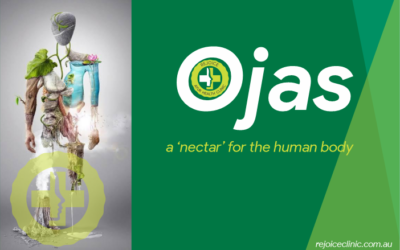Dysmenorrhoea
Ayurveda Clinic in Melbourne, Truganina
Dysmenorrhoea
In Ayurveda , the diseases in women are described under ‘ Yonivyapad ’ where Yoni means genital organs and Vyapad means diseases . One of them having similarity with dysmenorrhoea is Udavartini Yonivyapad . The cause of painful menstruation is Vata . The pain is before onset of menses which is relieved with start of menses . Dysmenorrhea is referred to as Kashtartav in Ayurveda. Apana Vayu, a subclass of Vata or wind dosha and mainly located in the pelvic region (pelvic floor) plays a significant role in menstruation. It is this Apana Vayu that controls and regulates the menstruation or Aartav in women (ensures that there is a healthy and normal menstrual cycle). The Apana Vayu usually flows in a down and out direction. An aggravation of this Vayu affects its natural flow. As a result, the Apana Vayu flows in an inward direction into the uterus triggering uterine pain and spasmodic pain during discharge of the menstrual blood (Raja).
Thus, restoring the Vata balance and ensuring an unobstructed and free flow of the Vata in the proper direction can go a long way in reducing the complications and discomfort associated with dysmenorrhea.
In short form decreasing efficiency and quality of life amongst women is Dysmenorrhoea , also called Menstrual cramps . The word Dysmenorrhoea is derived from Greek word : Dys – difficulty , Menorrhoea – monthly flow . Thus it is defined as pain associated with menstruation . It is the commonest disorder affecting women in reproductive age group.
Sign & Symptoms:
- Primary Dysmenorrhoea: Pain is experienced a few hours before and after the onset of menstruation and rarely lasts for longer than 12 hours.
- It is colicky in type and causes her to double up Pain is felt in lower abdomen , inner and front aspects of the thighs .
- Some low backache may be present .
- During severe attack , woman looks drawn , pale and may sweat . Nausea , vomiting are common . There may be diarrhoea and rectal and bladder tenesmus .
- Secondary Dysmenorrhoea: It usually develops after a phase of painless menstrual cycles and is seen at older age .
- Pain is worst premenstrually and relieved during menses .
- It is diffuse , dull ache in the pelvis often accompanied by backache .
- Most common causes are Pelvic inflammatory disease ( PID ) ,endometriosis , IUCD etc .
Management
- In Dysmenorrhoea, Panchkarma especially Uttar Basti and Anuvasan Basti deserve a special mention.
- Uttar Basti is mainly carried out to clear blockages that may be affecting the uterus, ensuring its proper nourishment. The procedure is simple and involves administration of herbal medicines inside the uterus (Garbhashay).
- Anuvasan Basti is a little different from Uttar Basti. The main aim of Anuvasan Basti is to restore the healthy and normal menstrual blood flow sans any pain and discomfort by ensuring an unobstructed movement of the Vata Dosha in a downward direction (rather than being inward as is the case in dysmenorrhea).
- For this purpose, the patient is given various decoction enema and medicated oils that works wonders to reduce the discomfort.
- As for the diet, avoid stale and cold food. Instead, go for foods that are warm and contain generous amounts of ghee.
- Drink water and other healthy fluids at regular intervals. A hydrated body acts as a catalyst keeping the Rasa Dhatu healthy and nourished.
- Avoid caffeinated drinks as they can have deleterious consequences.
- Avoid stress and anxiety. Meditation and yoga can play a pivotal role to keep you relaxed (physically, mentally as well as emotionally), thereby reducing the discomfort.
- Counselling : Explaining young girls regarding the condition and reassurance should be an essential component in the treatment plan . Girls should be taught to have a proper outlook on menstruation and health in general .
- Improvement in nutritional status and dietary changes .
- The yoga-asanas which are helpful in dysmenorrhoea are pavanmuktasana, bhujangasana , paschimottanasana , katichakrasana , Pranayam etc .
- Diet : whole grains – wheat , rice , oats , millets , quinoa ; fruits , green leafy vegetables , legumes , nuts , seeds – sesame , pumpkin , flax ; spices – ginger , garlic , cumin , turmeric , ajwain etc .



